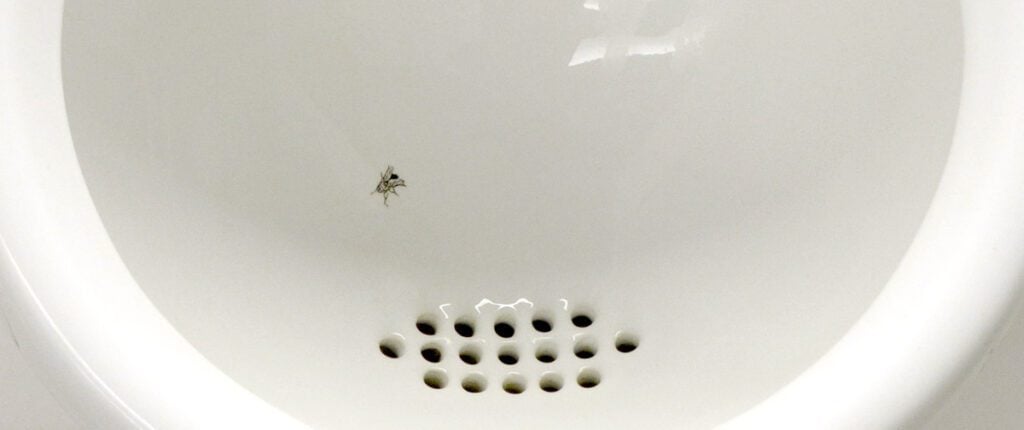Cost-cutting is crucial for all airports and airlines, particularly in the current market. Over the years, many cost-cutting initiatives have been implemented, but this outdated one from Amsterdam Schiphol must rank among the most unexpected. The airport calculates that adding a fly image to urinals has resulted in an 8% reduction in cleaning expenses. But was this technique effective?
The Amsterdam Airport installed a picture of a fly in the urinals so that men could aim at it and prevent splashing urine outside to reduce cleaning costs. It was an effective tactic.
The Cleaning Challenge Accepted
Bathroom equipment manufacturers and suppliers have tried various methods to increase cleanliness. Unsurprisingly, male urinals are a major focus of this. They are not the cleanest, but they are convenient for space and quick turnaround in crowded public restrooms. To reduce splashback, a number of methods and urinal designs have been tried, but Schiphol Airport has demonstrated over the years that sometimes the simplest solution is the best.
The concept is basic. The urinal’s base can be decorated with an image to give users something to aim for. Psychologically speaking, we enjoy doing that in a fascinating article published in Works That Work magazine. This is covered in detail. The etched fly image is directly above and to the left of the urinal drain at Amsterdam Schiphol Airport. (Source: Simply Flying)
The Challenge Backed Up and Proven
Without concrete results, this would only be a peculiar design element. But it has managed to save a lot of money. It has allegedly cut down urinal spillage by up to 80%, claims Kieboom. Based on his experience, Klaus Reichardt, who created the waterless urinal and currently oversees a business selling this technology, believes this is a less significant but still substantial issue. He clarified:
As I have learned over the past 25 years, bathroom behavior can be really strange. Perhaps 60–70% might start to pee toward the fly; the others probably wouldn’t care so much. I’d say the reduction in spillage is probably more like 50%, but even so, that is still noticeable.
Klaus Reichardt, Creator of the Waterless Urinal
Additionally, the decrease in spillage results in cost savings. According to Kieboom, this accounts for about 8% of Schiphol’s overall cleaning budget for public restrooms.
The discipline of behavioral economics is where such a principle originates. Numerous instances exist where people can unknowingly be influenced or nudged to alter their behavior. When Richard Thaler won the Nobel Prize in Economics in 2017 for his work in the field, citing the airport fly urinal as his favorite example of an economic budget, the Washington Post highlighted this.
Incredibly, an airport restroom has contributed so much to this field! Of course, Schiphol is among the world’s oldest airports. Additionally, it invented the overwing jet bridge to make it easier for large widebodies to arrive at the terminal, which is one of its more technical accomplishments. This is merely another caution to add to the list. (Source: Simply Flying)
Image from
